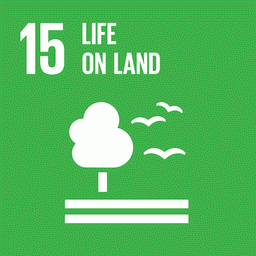A scientific paper published today in the journal “Frontiers” shows that the Brazilian Ministry of Health has recorded, on average, 103% fewer deaths and 14% fewer cases of infection among Indigenous peoples in the Amazon than the independent survey by the Coordination of Indigenous Organizations of the Brazilian Amazon (COIAB), carried out between February 23 and October 3, 2020.
The survey, organized by COIAB, has been going on since March 2020, conducted in partnership with Indigenous leaders and health professionals, organizations of the COIAB Network and using official data, and it aims to reveal and avoid the under-reporting of cases of Covid-19 among Indigenous peoples in the Amazon. The data from this Indigenous community-based surveillance, as COIAB calls it, are publicly and freely available on social networks and on the institution’s website (https://coiab.org.br/covid, Portuguese only), and are updated weekly.
Indigenous peoples are among the most vulnerable groups in the Covid-19 pandemic. According to the new study, in the Legal Amazon the incidence rate is 136% higher than the national average for the period studied, and 70% higher than the average among all inhabitants of the region. The Indigenous mortality rate per 100 thousand inhabitants is 110% higher than the Brazilian average and exceeds the region’s average by 89%.
Different reasons explain this difference in the rates, such as invasions of the territories for illegal logging and mining. “There is a direct correlation between the occurrence of illegal activities on Indigenous lands and a high incidence rate of Covid-19 cases,” says IPAM (Amazon Environmental Research Institute) researcher Martha Fellows, who led the effort. Among the other authors are Indigenous researchers from COIAB and scientists from the University of Brasilia (UnB), the International Institute of Education in Brazil (IIEB), the Oswaldo Cruz Foundation, the Lancaster Environment Center in the UK, and from Nature and Culture International in Brasilia.
Insufficient vaccine
The under-reporting of cases is also reflected in the vaccination campaign – the National Immunization Plan leaves out approximately a quarter of the country’s Indigenous population. There are about 200,000 people who were not included as a priority target group. In Manaus, about 20,000 Indigenous people were excluded from vaccination because they live in urban areas, according to an estimate by the Coordination of Indigenous Peoples of Manaus and Surrounding Areas, one of COIAB’s member associations.
“The vaccination campaign considers only the Indigenous population living in designated Indigenous lands, and excludes those who live in cities or who are in non-approved territories, also ignoring the circulation that exists between these places,” says professor and researcher Paulo Cesar Basta, from the National School of Public Health of the Oswaldo Cruz Foundation, one of the authors of the study. “It is necessary to treat this priority group more comprehensively, or the risk of transmission will remain high.”
By differentiating Indigenous peoples who live in villages from those who live in the cities, “the government reinforces the structural racism towards these populations, disrespects the right to self-determination recognized by the Federal Constitution and the United Nations Declaration on the Rights of Indigenous Peoples, and leaves vulnerable groups on the sidelines, maintaining a cycle of infection that could be interrupted immediately,” says the executive director of the Indigenous Fund of the Brazilian Amazon, Valéria Paye, also an author of the study. “Beyond under-reporting, it is a process of erasing the indigenous identity.”
For COIAB project technician Luiz Tukano, the exclusion of a portion of this population adds to other problems, with negative impacts on the immunization of this group. “The data from the SIASI (Indigenous Health Information System) is not up to date and excludes many relatives; some Indigenous Health Districts have huge logistical challenges; there’s also the slow pace of digitalization of health care data, which makes it very difficult,” he says.
Risks
The scientific article also sheds light on the fragility of the health care provided to Indigenous populations that live in their ancestral territories. By analyzing the cases per Special Indigenous Health District (DSEI), the researchers observed that the regions where more cases occurred were not necessarily the ones that recorded more deaths.
The difficulty in accessing the health system plays an important role: the average distance from an Indigenous land in the Amazon to a municipality with ICU beds is 271 kilometers, and can be as much as 700 km, as is the case for some villages in the Alto Rio Negro DSEI, in the Amazonas State. Another factor is pre-existing comorbidities, such as hypertension and diabetes, diseases related to the loss of Indigenous food security and sovereignty in the communities.
“In recent decades, Brazil has advanced in Indigenous health care, but there is still much room for improvement. This under-reporting that we identified in the study, the disparities in treatment, and the still low vaccination rate compared to what is needed, show that adjustments need to be made by the federal government, both in healthcare and in environmental governance, and urgently,” says biologist Reinaldo Lourival, from the Projeto Bem Viver de Roraima, a partnership between CIR, IIEB, and NCI.
“Taking into account the Indigenous movement and our vision for the elaboration of public health policies, with respect to local perspectives and culturally viable treatments, is fundamental to protecting native peoples and, at this moment, helping to stop the advance of the Covid-19 pandemic in the Amazon,” says Paye.
The community monitoring done by COIAB is part of the “Emergency Action Plan for Combating the Advance of the Coronavirus and Treating Indigenous Peoples of the Brazilian Amazon,” implemented by the institution since March last year.

